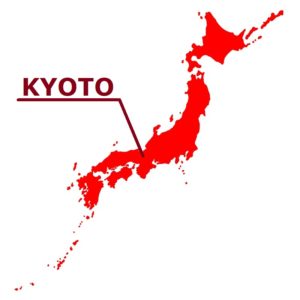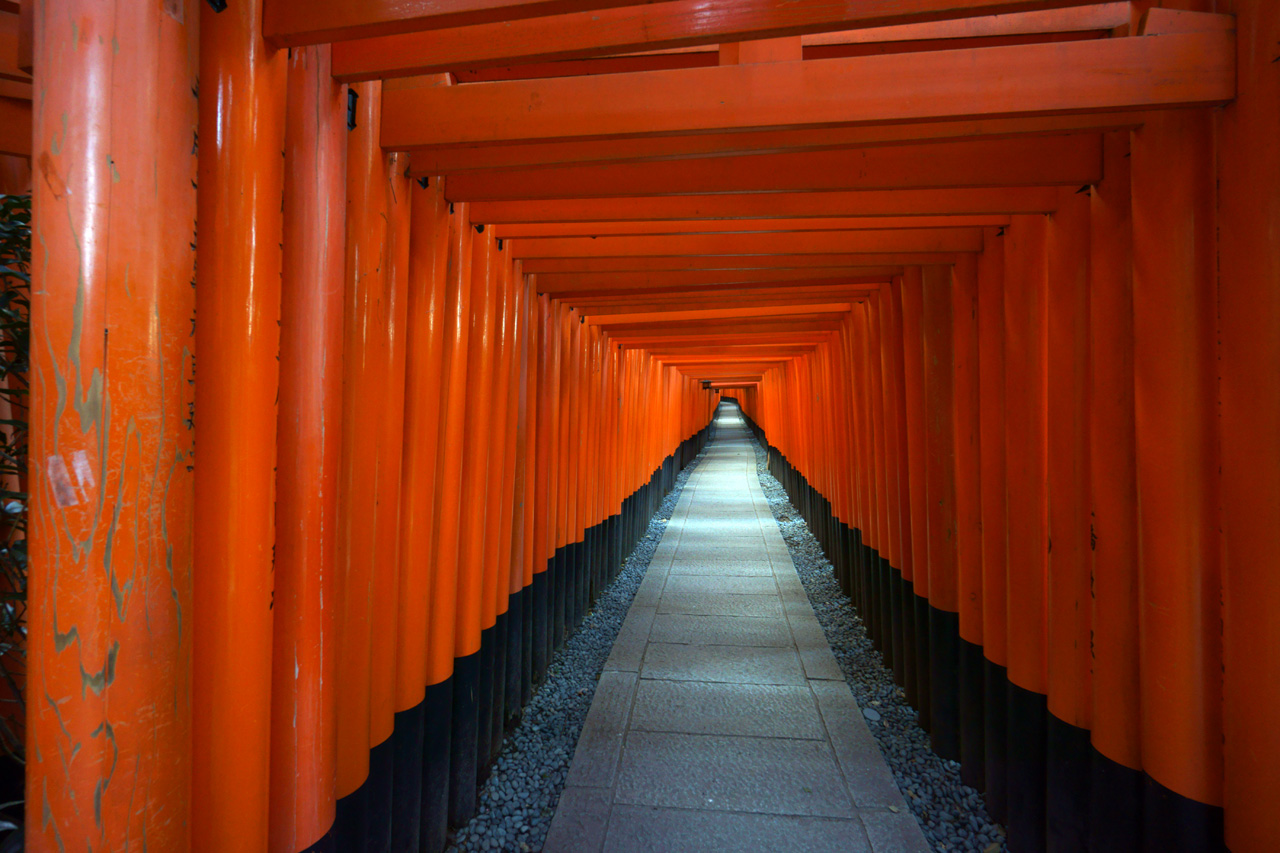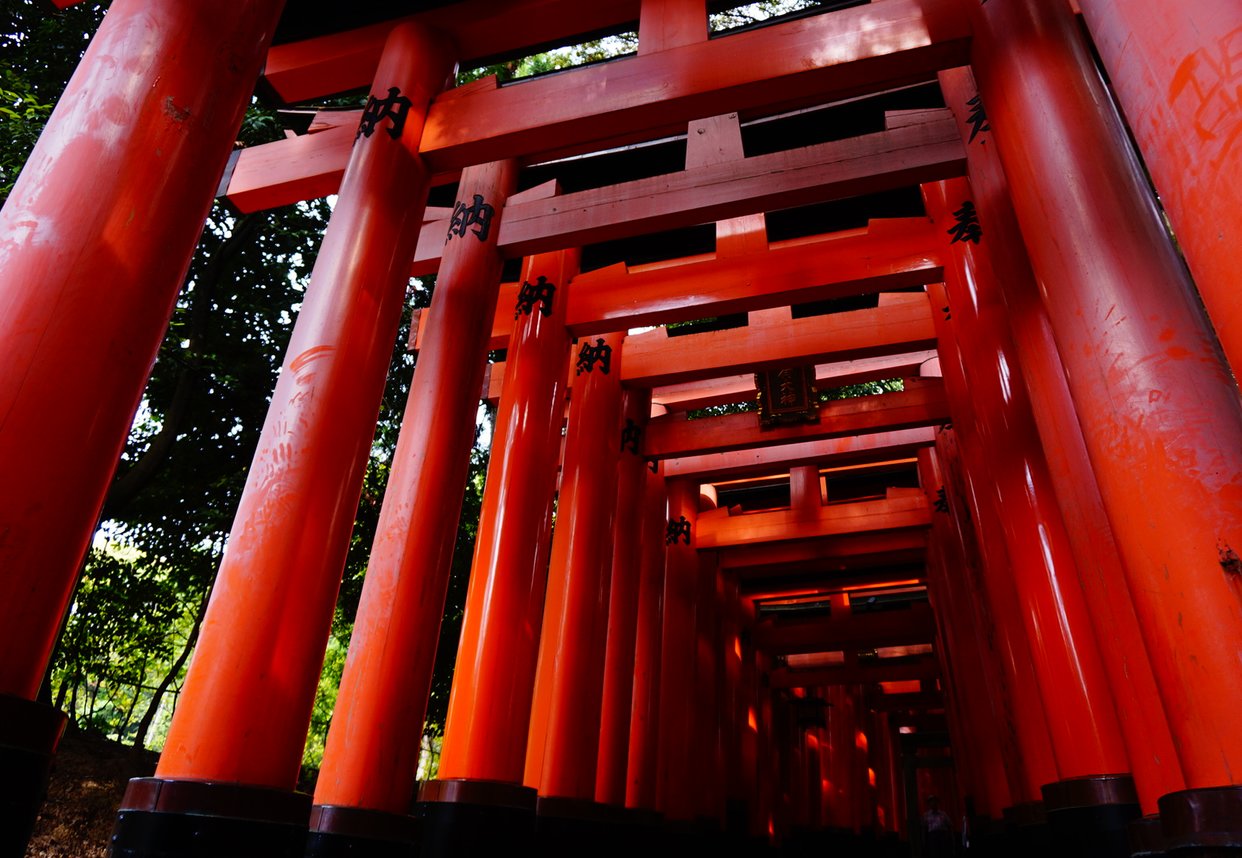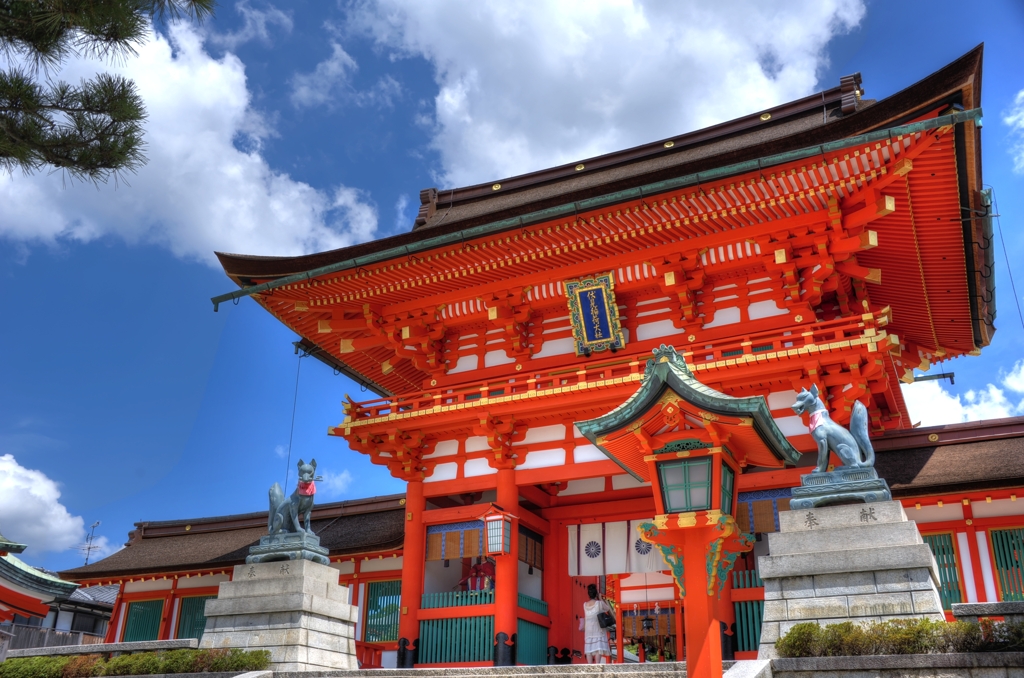
The origin of Fushimiinari-Taisha Shrine is not clearly understood. It is said that it is the beginning of this shrine that the family who had Fukakusa area as a territory worshiped bumper crop and worshiped the ancestor spirit. It is certain that there was a shrine in the Nara era as it was reported that a shrine was enshrined in Mt.Inari in 711.
In the Edo era, the war was gone and the commercials developed. Fushimiinari-Taisha Shrine was a god of bumper crop, but it became to be believed by merchants nationwide because it can also be connected to prosperous business.
As a result, branch shrine of Inari shrine became popular. A custom to dedicate the red torii to the Taisha was born in the Edo period in return for the wish has come true. This is the beginning of Senbon Torii.
Fushimiinari-Taisha Shrine has been collecting people’s faith for more than a thousand years. Speaking of the charm of Fushimiinari-Taisha Shrine, the Senbon Torii is famous, but besides that, torii are connected to most of the approach to Mt. Inari. These torii were dedicated as thanks to those who visited Fushimiinari-Taisha Shrine. A huge number of torii is a proof that the shrine has miraculous powers.
In this precinct of the shrine there are souvenir shops and shops selling torii for votive dedication. Among them, spit-roastings of sparrow sold between November and February are very rare. As sparrows are also harmful birds to eat rice, it is said that they wanted a bumper crop by eating it. Because it is rarely eatable outside of this shrine’s surroundings, you may want to eat it.
Mt. Inari is not a mountain with a high altitude, but it takes two hours to make a round. If you would like to watch everything in the precincts every corner, you should visit in a suitable shape suitable for mountain walking with plenty of time. There are various shops on the approachstone, souvenirs related to shrines such as fox rice crackers and fox masks are sold. It is fun to stop by the stores here and there.
God of the farming
It is like an unending stretch of the tunnel of vermilion torii (an archway to a Shinto shrine) overlapping at short intervals. Fushimiinari-Taisha Shrine with such impressive the Senbon Torii (a thousand torii).
“Inari” means it as “to carry on rice plant”, In other words, “controlling staple grains and food” that is God of the farming.
Fushimiinari-Taisha Shrine in Fushimi Ward, Kyoto City is considered to be the headquarters of all the 30,000 Inari-jinja Shrines across the country. It is said that it was founded by Hatanokimi Iroku in 711.

As a gate which continues to the spirit world from the present world
The place with “Senbon Torii” which is the maximum charm of Fushimiinari-Taisha Shrine is equivalent to the entrance of the mountain which is an descended place of God. It is said to be the beginning that many torii was built as a gate which continues to the spirit world in which God is from the present world.

Approximately 10,000 torii dedicated by devotees stand on Mt. Inari
By the name called “the Senbon Torii (a thousand torii)”, the torii are apt to be thought to be 1,000 in total, but is not so. The back side of Fushimiinari-Taisha Shrine has much torii anyhow besides the Senbon Torii. Approximately 10,000 torii dedicated by devotees stand on Mt. Inari, among which the Senbon Torii are particularly famous.
The numbers seem to continue still increasing. It is said that degradation of torii is also intense, approximately three of them a day must be built newly or they must be fixed.

Custom to dedicate a torii from the meaning of the thanks
A custom to dedicate a torii from the meaning of the thanks that a wish “went” or “passed” spread after the Edo period. The custom made the spectacle of today’s Inari mountain.

It is a highlight full load
You can enjoy the hiking of the Inariyama domain when you climb the slope from the Senbon Torii. From the foot to the top, it takes round-trip two or three hours. People’s figure decreases so that a summit is approached, but it is a highlight full load, a pond and a waterfall being on the way.

Information(Access, Price/Charge, Tel, Address, Official site, etc.)
| Name: | Fushimiinari-Taisha Shrine |
| Address: | Fukakusayabunouchicho 68 Kyoto Fushimi-ku, Kyoto 612-0882 Japan |
| Access: | JR Nara-sen line “Inari-eki” Station (2 minutes walk) |
| Tel: | (+81)75-641-7331 |
| Price / Charge: | Free |
| Official site: | http://inari.jp/ |
Leave a Reply